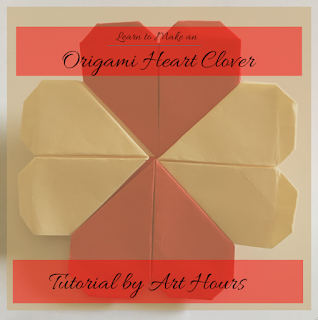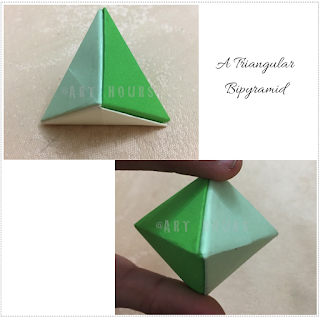Come September...so now it is warm rather than the sun blasting its heat on the head, the grass is cooler. A new month has come, and as we try to forget the summer, here's a new origami tutorial...yes after a long time I suppose. Well, lets say I was busy managing my summer time with some freelancing projects and there was hardly any time to pursue a hobby. But then, here I am back with a mini origami tutorial for kids. It is a paper rose made from two different sheets of paper and is a rather easy tutorial. I shall try posting more tutorials in between work, no promises though!
For now, let's learn to make an easy origami rose. It's so easy that anyone who doesn't like too many folds can also make it.
 |
| Origami Rose Tutorial by Art Hours |
Procedure to make the rose flower:
Here we have used a 4" pink colored paper with one side white. Start with the white side on the top.
- Step 01- Make a horizontal and vertical crease along the center of the paper
- Step 02 - Now fold all the four corners to meet at the centre
- Step 03 - Fold in the tips as shown in the figure.
- Step 04 - Fold the four corners backwards along the hidden lines shown to give shape to the flower and that's done.
Let's make the leaf now.
- Step 01 - Make a diagonal crease along the centre.
- Step 02 - Fold the top corners to meet at the centre.
- Step 03 - Note the crease in the picture for the next fold.
- Step 04 - Fold the lower flaps to meet at the centre.
- Step 05 - Fold the leaf into half.
- Step 06 - Pocket fold along the hidden lines and the leaf is ready.
So here's how it will look like, once the two units are assembled.
 |
| Origami Rose Flower |
This is an easy flower to fold, so do give it a try.
You can use this origami flower model to decorate and make greeting cards. The options are endless, just be creative.
You can use this origami flower model to decorate and make greeting cards. The options are endless, just be creative.
Hope this tutorial is helpful.
Thank you for stopping by. Have a good day.
---






















